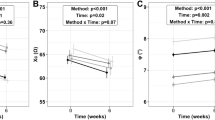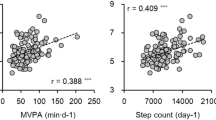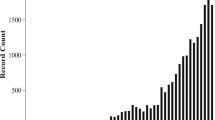Abstract
Background
Bioelectrical impedance vector analysis (BIVA) and phase angle (PhA) are important for monitoring hydration, muscle function, and quality of life in older adults. Resistance training (RT) can counteract aging’s adverse effects on cellular integrity and function.
Objective
This study compared the effects of RT volume reduction on BIVA and PhA in physically independent older women. Sixty-seven participants (>60 years) underwent a 20-week standardized whole-body RT program (eight exercises, three sets each, 8–12 repetitions, three non-consecutive days per week in the morning). They were then randomly assigned to one of the three eight-week training conditions following the training model described above: reduced volume to one set (RV1, n = 22), two sets (RV2, n = 24), or maintained volume (MV, n = 21). Bioimpedance spectroscopy measured total body water (TBW), intracellular (ICW), and extracellular (ECW) water, BIVA, and PhA based on resistance (R), impedance (Z), reactance (Xc), and height (H). All groups showed significant increases in TBW, ICW, and ECW during the volume reduction phase (P < 0.05).
Results
R, R/H, Z, and Z/H decreased across all groups, with significant changes from the pre-conditioning phase in the RV1 and RV2 groups (P < 0.05). Xc and Xc/H increased during the pre-conditioning phase across all groups and returned to baseline during the volume reduction phase (P < 0.05). PhA increased during the pre-conditioning and was maintained during the volume reduction phase (RV1 = +0.33°, RV2 = +0.50°, MV = +0.47°; P < 0.05).
Conclusion
These results suggest that reducing RT volume by up to one-third can still improve PhA, BIVA, and hydration status in older women.
This is a preview of subscription content, access via your institution
Access options
Subscribe to this journal
Receive 12 print issues and online access
269,00 € per year
only 22,42 € per issue
Buy this article
- Purchase on SpringerLink
- Instant access to full article PDF
Prices may be subject to local taxes which are calculated during checkout



Similar content being viewed by others
Data availability
Due to ethical restrictions related to participant privacy, the data that support the findings of this study are not publicly available. However, anonymized data may be made available from the corresponding author upon reasonable request.
References
Norman K, Stobäus N, Pirlich M, Bosy-Westphal A. Bioelectrical phase angle and impedance vector analysis-clinical relevance and applicability of impedance parameters. Clin Nutr. 2012;31:854–61.
Dos Santos L, Cyrino ES, Antunes M, Santos DA, Sardinha LB. Changes in phase angle and body composition induced by resistance training in older women. Eur J Clin Nutr. 2016;70:1408–13.
Basile C, Della-Morte D, Cacciatore F, Gargiulo G, Galizia G, Roselli M, et al. Phase angle as bioelectrical marker to identify elderly patients at risk of sarcopenia. Exp Gerontol. 2014;58:43–46.
Campa F, Colognesi LA, Moro T, Paoli A, Casolo A, Santos L et al. Effect of resistance training on bioelectrical phase angle in older adults: a systematic review with Meta-analysis of randomized controlled trials. Rev Endocr Metab Disord. 2022. https://doi.org/10.1007/s11154-022-09747-4.
Campa F, Matias CN, Marini E, Heymsfield SB, Toselli S, Sardinha LB, et al. Identifying athlete body fluid changes during a competitive season with bioelectrical impedance vector analysis. Int J Sports Physiol Perform. 2020;15:361–7.
Francisco R, Jesus F, Gomes T, Nunes CL, Rocha P, Minderico CS, et al. Validity of water compartments estimated using bioimpedance spectroscopy in athletes differing in hydration status. Scand J Med Sci Sports. 2021;31:1612–20.
Lukaski HC, Piccoli A. Bioelectrical impedance vector analysis for assessment of hydration in physiological states and clinical conditions. In: Handbook of anthropometry: physical measures of human form in health and disease. Springer, 2012, pp 287–305.
Schoenfeld BJ. The mechanisms of muscle hypertrophy and their application to resistance training. J Strength Conditioning Res. 2010;24:2857–72.
Cunha PM, Tomeleri CM, Nascimento MAD, Nunes JP, Antunes M, Nabuco HCG, et al. Improvement of cellular health indicators and muscle quality in older women with different resistance training volumes. J Sports Sci. 2018;36:2843–8.
Cunha PM, Nunes JP, Tomeleri CM, Nascimento MA, Schoenfeld BJ, Antunes M, et al. Resistance Training Performed With Single and Multiple Sets Induces Similar Improvements in Muscular Strength, Muscle Mass, Muscle Quality, and IGF-1 in Older Women: A Randomized Controlled Trial. J Strength Conditioning Res. 2020;34:1008–16.
Ribeiro AS, Schoenfeld BJ, Pina FL, Souza MF, Nascimento MA, dos Santos L, et al. Resistance training in older women: comparison of single vs. multiple sets on muscle strength and body composition. Isokinet Exerc Sci. 2015;23:53–60.
Carvalho L, Junior RM, Barreira J, Schoenfeld BJ, Orazem J, Barroso R. Muscle hypertrophy and strength gains after resistance training with different volume-matched loads: a systematic review and meta-analysis. Appl Physiol Nutr Metab. 2022;47:357–68.
Schoenfeld BJ, Ogborn D, Krieger JW. Dose-response relationship between weekly resistance training volume and increases in muscle mass: A systematic review and meta-analysis. J Sports Sci. 2017;35:1073–82.
Krieger JW. Single vs. multiple sets of resistance exercise for muscle hypertrophy: a meta-analysis. J Strength Cond Res. 2010;24:1150–9.
Cunha PM, Ribeiro AS, Tomeleri CM, Schoenfeld BJ, Silva AM, Souza MF, et al. The effects of resistance training volume on osteosarcopenic obesity in older women. J Sports Sci. 2018;36:1564–71.
Bickel CS, Cross JM, Bamman MM. Exercise dosing to retain resistance training adaptations in young and older adults. Med Sci Sports Exerc. 2011;43:1177–87.
Devries MC, Breen L, Von Allmen M, MacDonald MJ, Moore DR, Offord EA, et al. Low-load resistance training during step-reduction attenuates declines in muscle mass and strength and enhances anabolic sensitivity in older men. Physiol Rep. 2015;3:e12493.
Tavares LD, De Souza EO, Ugrinowitsch C, Laurentino GC, Roschel H, Aihara AY, et al. Effects of different strength training frequencies during reduced training period on strength and muscle cross-sectional area. Eur J Sport Sci. 2017;17:665–72.
Fell J, Williams AD. The Effect of Aging on Skeletal-Muscle Recovery from Exercise: Possible Implications for Aging Athletes. J Aging Phys Act. 2008;16:97–115.
Antunes M, Kassiano W, Silva AM, Schoenfeld BJ, Ribeiro AS, Costa B, et al. Volume reduction: which dose is sufficient to retain resistance training adaptations in older women?. Int J Sports Med. 2022;43:68–76.
Sardinha LB, Lohman TG, Teixeira PJ, Guedes DP, Going SB. Comparison of air displacement plethysmography with dual-energy X-ray absorptiometry and 3 field methods for estimating body composition in middle-aged men. Am J Clin Nutr. 1998;68:786–93.
Fragala MS, Cadore EL, Dorgo S, Izquierdo M, Kraemer WJ, Peterson MD, et al. Resistance training for older adults: position statement from the national strength and conditioning association. J Strength Cond Res. 2019;33:2019–52.
Piccoli A, Pastori G. BIVA software 2002. Department of Medical and Surgical Sciences, University of Padova: Padova, Italy 2002;1–17.
Cohen J. A power primer. Psychol Bull. 1992;112:155–9.
Lukaski HC, Kyle UG, Kondrup J. Assessment of adult malnutrition and prognosis with bioelectrical impedance analysis: phase angle and impedance ratio. Curr Opin Clin Nutr Metab Care. 2017;20:330–9.
Ward LC, Brantlov S. Bioimpedance basics and phase angle fundamentals. Rev Endocr Metab Disord. 2023;24:381–91.
Schoenfeld BJ, Grgic J, Ogborn D, Krieger JW. Strength and hypertrophy adaptations between low- vs. high-load resistance training: a systematic review and meta-analysis. J Strength Cond Res. 2017;31:3508–23.
Lopez P, Radaelli R, Taaffe DR, Newton RU, Galvão DA, Trajano GS, et al. Resistance training load effects on muscle hypertrophy and strength gain: systematic review and network meta-analysis. Med Sci Sports Exerc. 2021;53:1206–16.
Schoenfeld BJ, Contreras B, Krieger J, Grgic J, Delcastillo K, Belliard R, et al. Resistance training volume enhances muscle hypertrophy but not strength in trained men. Med Sci Sports Exerc. 2019;51:94–103.
Yamada AK, Verlengia R, Bueno Junior CR. Mechanotransduction pathways in skeletal muscle hypertrophy. J Receptors Signal Transduct. 2012;32:42–44.
Loomis WH, Namiki S, Ostrom RS, Insel PA, Junger WG. Hypertonic stress increases T cell interleukin-2 expression through a mechanism that involves ATP release, P2 receptor, and p38 MAPK activation. J Biol Chem. 2003;278:4590–6.
Piccoli A, Rossi B, Pillon L, Bucciante G. A new method for monitoring body fluid variation by bioimpedance analysis: the RXc graph. Kidney Int. 1994;46:534–9.
Piccoli A, Pillon L, Pisanello L, Zacchello G. Electrical maturation trajectory of human tissues identified by bioelectrical impedance vector analysis. Nutrition. 1999;15:77–78.
Figueiredo VC. Revisiting the roles of protein synthesis during skeletal muscle hypertrophy induced by exercise. Am J Physiol-Regulatory, Integr Comp Physiol. 2019;317:R709–R718.
Acknowledgements
We thank all subjects for their engagement in the study, the Coordination of Improvement of Higher Education Personnel (CAPES/ Brazil), and the National Council of Technological and Scientific Development (CNPq/Brazil) for the grants conceded to ESC. This work was partially supported by the Ministry of Education (MEC/Brazil), CNPq/Brazil, Secretariat of Science, Technology and Higher Education of Paraná (SETI)/Brazil, and Araucaria Foundation/Brazil. LS is supported by National Council of Technological and Scientific Development (CNPq/Brazil) with a postdoctoral fellowship (CNPq process: 152781/2024-2). PMC is supported by the National Council of Technological and Scientific Development (CNPq/Brazil) with a postdoctoral fellowship (CNPq process: 152340/2024-6) and an abroad fellowship (200039/2025-3).
Author information
Authors and Affiliations
Contributions
MA and ESC conceived and designed the study. MA, PMC, WK, and RJM conducted the intervention and supervised data collection. LAG and LSC contributed to statistical analysis and data interpretation. AMS and HCGN contributed to methodological support and bioimpedance procedures. LS, MA, PMC, LAG, AMS, WK, LTC, HCGN, RJM, LSC, and ESC contributed to writing and critically revising the manuscript. All authors read and approved the final version of the manuscript.
Corresponding author
Ethics declarations
Competing interests
The authors certify that they have no affiliations with or involvement in any organization or entity with any financial interest (such as honoraria, educational grants, participation in speakers’ bureaus, membership, employment, consultancies, stock ownership, or other equity interest, and expert testimony or patent-licensing arrangements), or non-financial interest (such as personal or professional relationships, affiliations, knowledge, or beliefs) in the subject matter or materials discussed in this manuscript.
Ethics statement
This study was approved by the Research Ethics Committee of the State University of Londrina, under approval number 48815515.0.0000.5231. All participants provided written informed consent prior to their inclusion in the study, in accordance with the Declaration of Helsinki.
Additional information
Publisher’s note Springer Nature remains neutral with regard to jurisdictional claims in published maps and institutional affiliations.
Rights and permissions
Springer Nature or its licensor (e.g. a society or other partner) holds exclusive rights to this article under a publishing agreement with the author(s) or other rightsholder(s); author self-archiving of the accepted manuscript version of this article is solely governed by the terms of such publishing agreement and applicable law.
About this article
Cite this article
Antunes, M., dos Santos, L., Gobbo, L.A. et al. Bioelectrical impedance vector analysis and phase angle in response to resistance training volume reduction in older women. Eur J Clin Nutr (2025). https://doi.org/10.1038/s41430-025-01635-9
Received:
Revised:
Accepted:
Published:
DOI: https://doi.org/10.1038/s41430-025-01635-9



